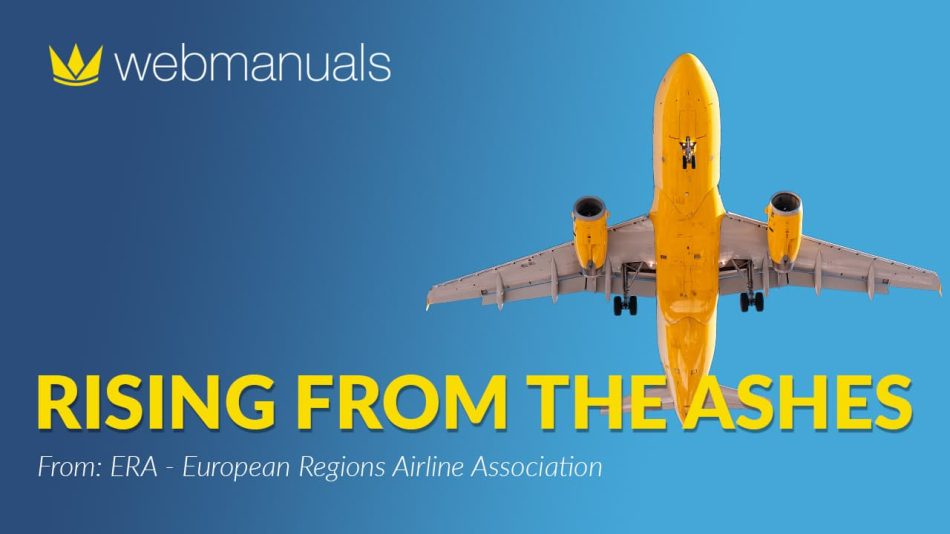From: ERA – European Regions Airline Association
Paul Sandström, Web Manuals’ Chief Operating Officer, discusses why airlines should be facing 2023 with optimism.
When airlines looked forward to 2023, ‘optimism’ may not have been the first term they considered. Having been operating with caution since the outbreak of COVID-19 three years ago, and February marking the one-year anniversary since the Russian invasion of Ukraine, it’s no doubt that survival instincts for some have placed the drive to improve operational efficiency on the back burner. That said, with the global airline industry forecast predicting a return to profitability this year, 2023 could be a year of prosperity for airlines.
The turbulence of 2022
In 2022, stagnant passengers seized the opportunity to move again, as border restrictions and quarantine measures eased in Europe and the US. But with airlines and airports faced with making staff redundancies during the pandemic, a surge in summer bookings was met by a significantly reduced workforce. As a result of the shortage, unhappy travellers reported lost or damaged luggage, queue times of up to four hours, severe flight delays and last-minute cancellations, all of which placed the industry under tighter scrutiny.
But it wasn’t just passengers who paid a price for the chaos. On 28 January, it was reported that British regional airline Flybe had gone into administration for the second time since March 2020. As well as this, it was recently announced that John Holland-Kaye would step down from his position as Heathrow’s chief executive after the international hub accumulated more than £4bn in losses over the course of the pandemic.
A brighter forecast for 2023
A large focus for the industry in 2023 will be avoiding the same operational issues as last year, preventing congestion and passenger delays while maintaining steady revenue growth. Though staff shortages will still exist to some degree, we’re seeing reports of airlines pushing to recruit thousands of new employees, including pilots, software engineers, maintenance technicians and flight attendants.
A few hubs in Europe have extended capacity curbs to ensure travellers don’t face the same travel experiences as last year. Notably, Amsterdam’s Schiphol Airport has said that airlines will need to book five percent fewer seats between the morning peak hours for travel during May holidays. Though this isn’t a sustainable long-term solution for airline finances, the decision will be beneficial in regaining control over increased passenger traffic and will help the airport prepare for peak summer months.
As the industry seeks to learn from last year’s mishaps, the International Air Transport Association (IATA) forecasts positive results for 2023, following a near-three-year downturn. Despite the continued rise of inflation in the US and Europe, IATA predicts that four billion passengers will take to the skies this year. With more hands onboard in the form of improved staff levels and tightened capacity, airlines will be in a better position to reinstate operational efficiency and face new demand.
Technological tailwinds
Despite the scrutiny, a silver lining has emerged. The issues airlines faced last year exposed the need for technological advancements as tools for building operational resilience. It’s likely that an increasing number of operators will begin implementing new technology and digital systems, or replacing older systems with more sophisticated innovations, as a way to improve airline agility, productivity and performance.
Automated equipment can be installed at airport check-in, baggage-drop and security. Though these processes have been available for several years, we envision 2023 will see an increasing number of hubs starting to roll out these types of hardware. It’s also important to note that a time when airlines are required to avoid Russian airspace, software equipment and rapid data transfers between air-to-ground can support with last minute rerouting.
That said, airlines don’t necessarily need to make big financial investments in state-of-the-art systems, such as artificial intelligence or autonomous robots. For example, digital tools can be easily integrated at an administrative level to support airline safety managers, pilots and maintenance crew with safety compliance monitoring. This is particularly critical during the current period of economic uncertainty.
Closing the door on 2022 will not make airlines immune to industry challenges as they perpetuate in 2023. Yet, the turbulence of the past few years has allowed airlines to revaluate their operational burdens. With a greater understanding of upcoming trends and access to digital tools, airlines can face the new year with confidence.




